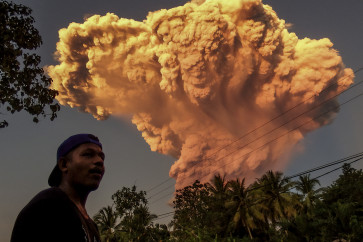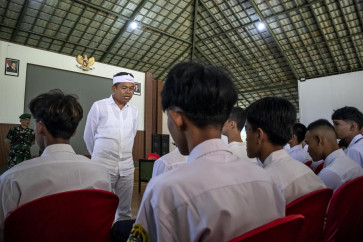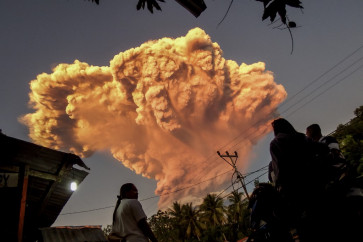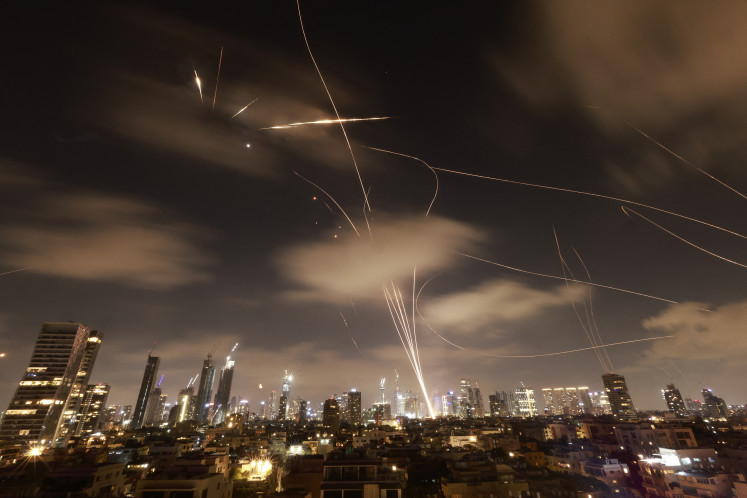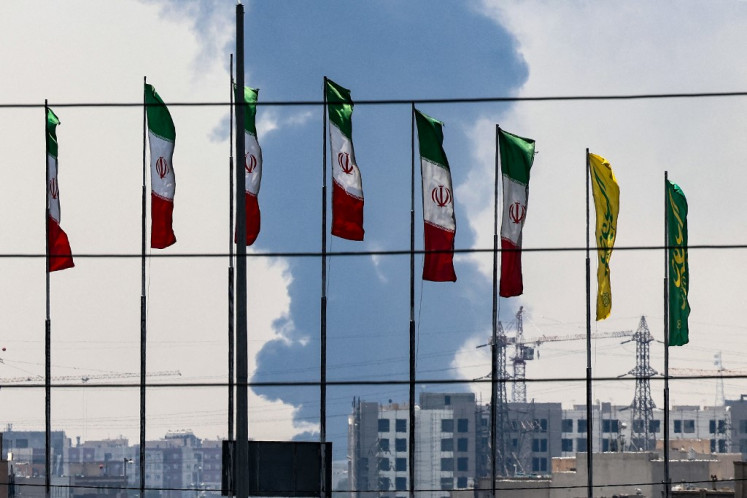Popular Reads
Top Results
Can't find what you're looking for?
View all search resultsPopular Reads
Top Results
Can't find what you're looking for?
View all search resultsIndonesian leadership in the Indo-Pacific
Indonesia’s recent decision to lead the regional debate on the future of the Indo-Pacific has been long overdue
Change text size
Gift Premium Articles
to Anyone

I
ndonesia’s recent decision to lead the regional debate on the future of the Indo-Pacific has been long overdue. Its effort to generate a consensus within the ASEAN on the Indo-Pacific and take it to the East Asia Summit later this year mark an important moment in the evolution of the post war regional architecture in Asia and its waters.
Although Jakarta was among the first (Tokyo, Canberra and Delhi were the others) to articulate the proposition that the Indo-Pacific is a coherent strategic space a few years ago, there seemed little urgency to advance the concept.
Much has happened since then. Rising China’s ambitious Belt and Road Initiative is compelling the region to rethink its strategic geography. It demands a reworking of the mental maps that divided Asia between the east and west from the 1950s and framed the Indian and Pacific Oceans as separate water bodies.
Among the factors that froze these mental maps was the inward turn of large Asian economies in the 1950s. China under Mao, Indonesia under Sukarno and India under Nehru had ambitious political agenda for the region and the world but began to close their economies in the name of self-reliance and socialism.
Indonesia and more broadly Southeast Asia turned towards regional economic integration and globalization in the 1970s. China and India soon followed — in the 1980s and 1990s respectively. The rise of Asia and its expanding economic and political footprint inevitably changed the cartography of the region — nudging it initially towards the notion of Asia-Pacific and now pushing it towards the much broader Indo-Pacific.
Although Beijing is wary of the Indo-Pacific construct, it is very at the head of the unstoppable force reordering our region. Chinese President Xi Jinping’s Silk Road Industrial Belt is about integrating not just the Asian, but also the Eurasian landmass. His Maritime Silk Road for the 21st Century seeks to connect China’s eastern seaboard with the markets of the Indian Ocean.
America dominated the two oceans after the World War II. But barring the Pacific Command, few in the United States national security establishment have seen the two oceans in the same frame. If the Obama administration began to toy with the idea of Indo-Pacific, the national security team of US President Donald Trump has adopted the term in a definitive manner.
That the US has taken to the idea of Indo-Pacific amid its growing conflict with China will continue to cloud the regional debate for a long time. The relations between the two largest economies and military powers are bound to have a great impact on the evolution of the regional architecture. But the idea of the Indo-Pacific is too important to be left to China and the US.
Asia has a long tradition of refusing to wear the strait jackets ordered by the great powers. During the Cold War, India, Indonesia and many others did not accept the bipolar division of Asia. Today, the Asian nations have more economic heft and loads of political self-assurance. Their interests and the ability to pursue them continue to grow. It is no surprise that many of them have come up with their own visions of the region.
Well before China came up with the Belt and Road Initiative, Japan began to lay out a new map for the region. Prime Minister Shinzo Abe talked about the “confluence of the two seas” — during his visit to India in 2007. After he returned to power in 2012, he articulated the notion of a “free and open Indo-Pacific”. He has also complemented the idea of “two seas” with the theme of “two continents” by bringing Africa into the Indo-Pacific map.
South Korea and Taiwan, two of the earliest industrial powers of Asia, are now talk of “looking south”. Australia, which faces both the oceans has been the most active in promoting the idea of Indo-Pacific. On its way to becoming the third largest economy, India sees its political interests rising in the Pacific. Europe, initially suspicious of the notion of Indo-Pacific, is now beginning to pay strategic attention to the region.
But it is Indonesia that is best-positioned to bring a measure of coherence to the Indo-Pacific discourse. It is the land link between the Indian and Pacific oceans and oversees the sea lines of communication that are vital to the entire world. Jakarta’s quiet leadership of the ASEAN has been critical to making Southeast Asia into a zone of peace and prosperity. It has also helped make ASEAN the main vehicle for the construction of a new regional architecture for the 21st century.
As renewed great power rivalries and trade wars threaten the region, Indonesia, has even a greater task at hand in preserving ASEAN unity and centrality. As it pursues the ASEAN route to an Indo-Pacific security order, Jakarta is beginning to complement its multilateralism with strong bilateral strategic partnerships and minilateral mechanisms.
Indonesia’s geographic location and its new status as a trillion dollar economy demands Jakarta can’t rely on multilateralism alone in safeguarding its interests in these turbulent times. Jakarta’s main challenge is to reinforce the construction of a normative order in the Indo-Pacific with a stable balance of power system.
__________________________
The writer is director of the Institute of South Asian Studies at the National University of Singapore. The views expressed are his own.

